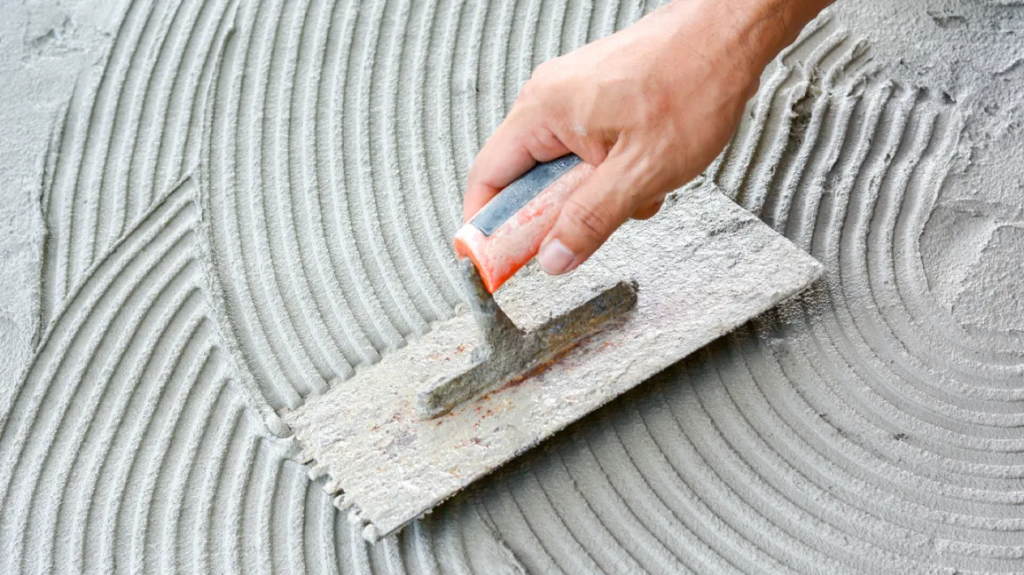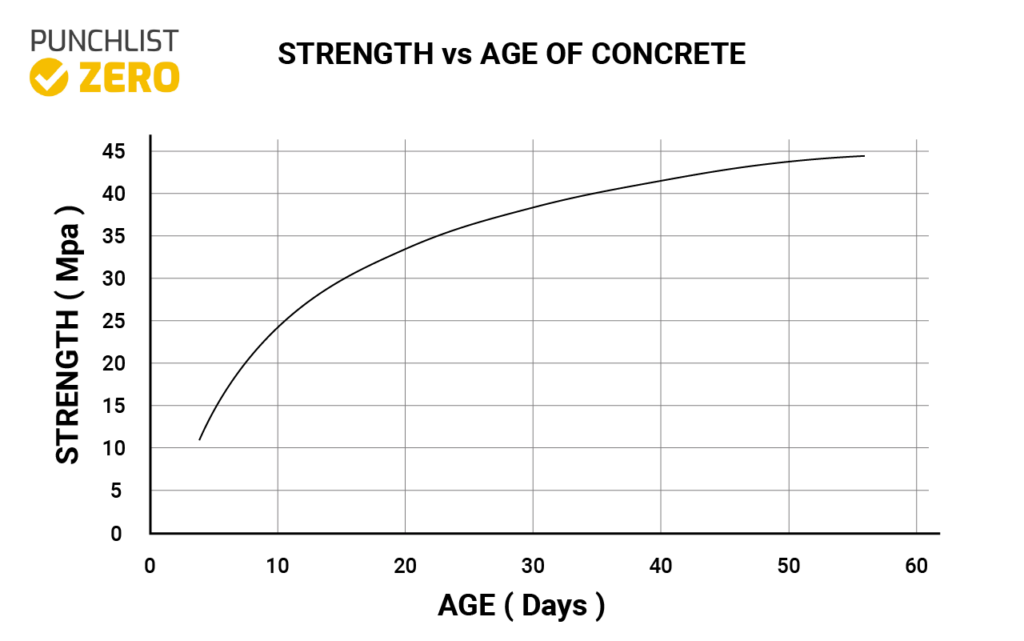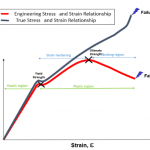The concrete strength curve plots the strength of concrete versus cure time. In this article, you will learn the importance of the concrete strength curve, understand how to read it, and learn how concrete strength varies over time.

Importance of the Concrete Strength Curve
Concrete strength and maturity have long been a topic of interest for construction workers and civil engineers globally. One of the most commonly used materials today, concrete is an essential element in almost all construction projects today. Therefore, workers often utilize certain concrete mixes to optimize certain strength levels and flowability.
A long time ago, the only way to obtain information on concrete strength was to directly test samples of cylinders in compression. However, this method was extremely time-consuming and did not always produce the most accurate and consistent results.
Over time, scientists began closely analyzing and observing the common trends within these concrete cylinder tests. Eventually, enough predictions and assumptions could be made that led to a new discovery: the concrete strength curve. Development of this strength curve has led to workers being able to obtain accurate and efficient results while also saving hours of time.
Reading a Concrete Strength Curve

Shown above is the typical concrete strength curve as it relates to time. The horizontal axis represents age, measured in days. The vertical axis represents strength, measured in megapascals.
Reading this graph is simple. To find the strength of the desired concrete, determine its age and then find the corresponding value on the graph. Typical strength values that serve as benchmarks include measurements at 1, 3, 7, 14, and 28 days.
Uses of the Concrete Strength Curve
Today, nearly all construction projects rely on concrete to be an essential part of their project. Therefore, maximizing concrete strength is of utmost importance. Thus, construction and project managers will oftentimes refer to the concrete strength curve in order to schedule times at which concrete should be poured and used.
Depending on the conditions of where the project is taking place, strength conditions may vary. In locations such as Seattle or Houston where moisture is extremely high, the strength curve may not be as accurate and workers may be forced to utilize other methods. These methods include the original cylinder test, the velocity test, and the pullout test.
Concrete Strength vs. Time
As shown in the graph up above, you can find that concrete strength increases with time. Further evaluating the curve, it is telling that the rate of change in which it increases varies with time. The table below shows the age of concrete with a general corresponding strength percentage.
Concrete Age vs. Strength Percentage
| AGE | STRENGTH |
| 1 DAY | 16% |
| 3 DAYS | 40% |
| 7 DAYS | 65% |
| 14 DAYS | 90% |
| 28 DAYS | 99% |
From the table above, you can determine that after 28 days (4 weeks) concrete reaches its maximum possible strength. As a result, it is common practice for projects to measure and report concrete strength after the 28-day period.
What Causes Concrete Increase in Strength?
There are numerous factors that contribute to concrete’s increasing strength over time. The main causes are listed below.
- Water/Cement Ratio. This is the most important factor that results in varying strength levels. A lower w/c ratio leads to a higher strength. Over time, concrete tends to dehydrate and dry out, causing its strength level to increase.
- Compaction of Concrete. Arguably the second leading factor, concrete compaction has the ability to either increase or decrease concrete strength significantly. As concrete matures, air voids are removed and the material becomes very tightly packed.
- Curing of Concrete. The curing process of concrete is performed in order for concrete to reach its ideal moisture and temperature. By doing so, concrete strength is maximized as the foundation solidifies.
High Strength Concrete vs. Low Strength Concrete
Why does it matter what the strength of concrete is anyways? Isn’t all concrete strong? Well, yes. But, maximizing the strength of concrete provides many advantages for a project that low-strength concrete cannot. Below are common differences between high-strength and low-strength concrete.
- Durability. As you can probably assume, stronger concrete has a higher resiliency, allowing it to last longer. Even in busy environments such as water parks or warehouses, high-strength concrete will thrive.
- Structure Strength. High-strength concrete allows for firmer structures with higher integrity. This is significant especially in coastal climates or those at risk of tornados. These stronger structures increase the likelihood of the building being able to survive freak weather events such as hurricanes or earthquakes.
- Cost Efficiency. Having concrete of higher strength means less concrete is needed in foundations and construction. As a result, money is saved and concrete can be utilized in different places. This is why many construction project managers prioritize having high-strength concrete.

Conclusion
The new and improved concrete strength curve has become a staple in today’s modern construction industry. The graph has allowed workers everywhere to obtain information about concrete strength in a matter of seconds. As a result, timeliness and efficiency on construction projects around the globe have benefited greatly.



